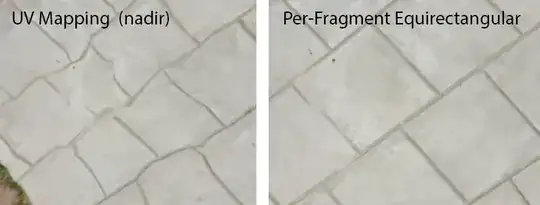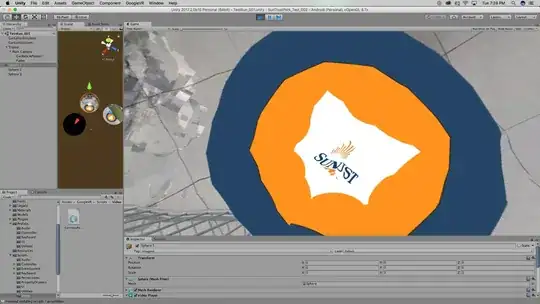This isn't a matter of codecs and resolution, you just need to match the texture mapping onto the sphere geometry to the mapping used in the video format - in this case equirectangular.
Equirectangular mapping (also called latitude/longitude or spherical coordinates) is non-linear. That means normal UV mapping can only approximate it - quite badly at the poles, in fact.

To fix this, we can calculate our own texture coordinate per fragment using the direction to the fragment being drawn, resulting in a perfect match. Here's an example shader that does this:
Shader "Unlit/PanoramaShader"
{
Properties
{
_MainTex ("Texture", 2D) = "white" {}
}
SubShader
{
Tags { "RenderType" = "Opaque" }
LOD 100
// Render the object inside-out.
Cull Front
Pass
{
CGPROGRAM
#pragma vertex vert
#pragma fragment frag
#pragma multi_compile_fog
#include "UnityCG.cginc"
struct appdata
{
float4 vertex : POSITION;
};
struct v2f
{
float4 vertex : SV_POSITION;
// Pass a view direction instead of a UV coordinate.
float3 direction : TEXCOORD0;
};
sampler2D _MainTex;
float4 _MainTex_ST;
v2f vert (appdata v)
{
v2f o;
o.vertex = UnityObjectToClipPos(v.vertex);
// Compute worldspace direction from the camera to this vertex.
o.direction = mul(unity_ObjectToWorld, v.vertex).xyz
- _WorldSpaceCameraPos;
return o;
}
fixed4 frag (v2f i) : SV_Target
{
// Convert the direction to the fragment into latitude & longitude.
float3 pos = normalize(i.direction);
float2 uv;
uv.x = atan2(pos.z, pos.x)* 0.5f;
uv.y = asin(pos.y);
// Scale and shift into the 0...1 texture coordinate range.
uv = uv / 3.141592653589f + 0.5f;
// Used directly, we'll get a texture filtering seam
// where the longitude wraps around from 1 to 0.
// This fixes that (you can skip this if your videos don't mipmap)
float2 dx = ddx(uv);
float2 dy = ddy(uv);
float2 du = float2(dx.x, dy.x);
du -= (abs(du) > 0.5f) * sign(du);
dx.x = du.x;
dy.x = du.y;
// In case you want to rotate your view using the texture x-offset.
uv.x += _MainTex_ST.z;
// Sample the texture with our calculated UV & seam fixup.
fixed4 col = tex2Dgrad(_MainTex, uv, dx, dy);
return col;
}
ENDCG
}
}
}
As a bonus, since we're just using the direction to the vertex, your object doesn't need to be a sphere - you can render this on a box or even a singe quad parented in front of the camera and it will act as a "magic window" into the 360 scene.

